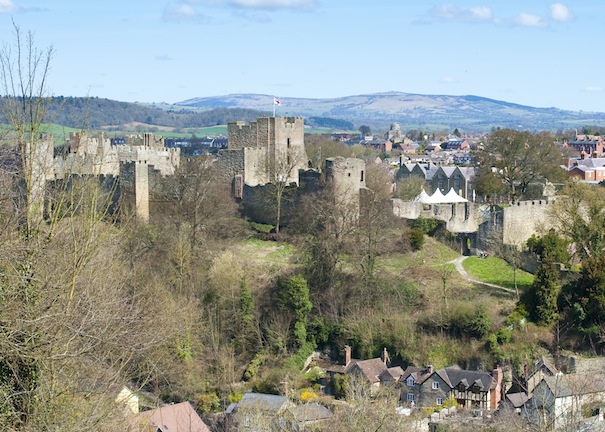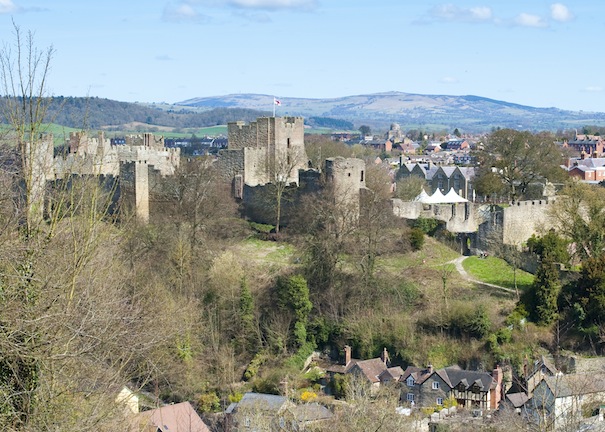Stephen Roberts, a guest writer from Dorset, explored Ludlow’s royal connections on a recent visit.
My wife and I have visited Ludlow many times, including on honeymoon, so we have a certain affinity for it. What I love is its importance as a border outpost in the Marches, its mighty castle and the little-known royal legacy it enjoys.
It was here that two Princes of Wales, both heirs to the English throne, had their households; two princes who hold particularly significant interest, as their premature deaths irrevocably changed English history.
The first was Edward, the eldest of the Princes in the Tower, sent to Ludlow in 1473 when he was just three years old by his father, the Yorkist King Edward IV. Ludlow was a major seat of Yorkist power during the Wars of the Roses and was considered a royal palace, as well as the seat of government for Wales and the borders, of which young Edward was nominal head.
In November 1473, the Prince’s uncle, Earl Rivers, was appointed his governor which effectively made him regional ruler. For the next decade, Ludlow was Edward’s home. He was surrounded by trusted men, who catered for his every need.
Unknowingly, Edward IV had planted the seeds of a power struggle, which would burst into life when he died unexpectedly in April 1483. With Rivers as sole guardian of the Prince and the King’s younger brother, Richard Duke of Gloucester, holding power in the north and named as ‘protector’ in the event of the King’s death, conflict was inevitable.
A king without a crown
It was at Ludlow in April 1483 that the 12-year-old prince heard of his father’s death. He had already been proclaimed King Edward V in London, but he was to be a king never to wear a crown. Rivers was commanded to bring the new King to London byMay Day for his coronation. However, Richard Duke of Gloucester was also heading south.
The two parties met in Buckinghamshire, where Richard ‘took possession’ of the young King and arrested his entourage. These were ruthless times: Earl Rivers was packed off to Pontefract for execution, and Edward headed for the Tower of London, ostensibly for his coronation. As rumours spread that Prince Edward and his brother may have been illegitimate, Gloucester seized the throne – becoming the infamous King Richard III. Edward and his brother disappeared into the bowels of the fortress, never to be seen again, presumed murdered. Richard III’s remains may have been recovered from a car park in Leicester, but his reputation still needs some work.
Almost 30 years later, a second young prince arrived in Ludlow. Arthur was the eldest son of Henry VII, vanquisher of Richard III, born in 1486 and invested with the title of Prince of Wales in 1489.
When Arthur was only two years old, a marriage was arranged with the Spanish princess, Catherine of Aragon. The nuptials took place in London, then the pair returned to Ludlow. Arthur was just 15.
Brothers in love
The short time they spent together in Ludlow Castle became the scene of perhaps the most controversial wedding night in English history. Catherine’s claim that her marriage to Arthur was never consummated became a central argument in favour of her later marriage to Henry VIII – Arthur’s own brother – which was itself annulled amidst the bitter acrimony that swept in the break with Rome.
Arthur was a sickly youth and lived with Catherine in Ludlow for only a short while before his death in April 1502 from an unnamed infection, possibly TB.
Prince Arthur’s body lay in the Great Hall at Ludlow Castle, where the great and good of western England came to pay respects. Arthur’s corpse was then taken to the church of St Laurence’s for a requiem, not attended by his grief-stricken father or widow, who was herself seriously ill. From Ludlow, the Prince’s remains were taken to Worcester Cathedral for internment.
Inside St Laurence’s Church a plaque records: “Arthur Prince of Wales died at Ludlow Castle 2ndApril 1502 aged 15 years 7 months. His heart was buried near this place.”
So Ludlow’s place in history is assured: Edward V began his final journey from here, taking him not to his coronation but to death in the Tower. Tragedy stalked the ancient citadel at Ludlow, as Prince Arthur, the second ‘boy who would be King’ died here, ushering in the reign of his younger brother and the turmoil that followed.
Photos: authors own or courtesy of shropshiretourism.co.uk







